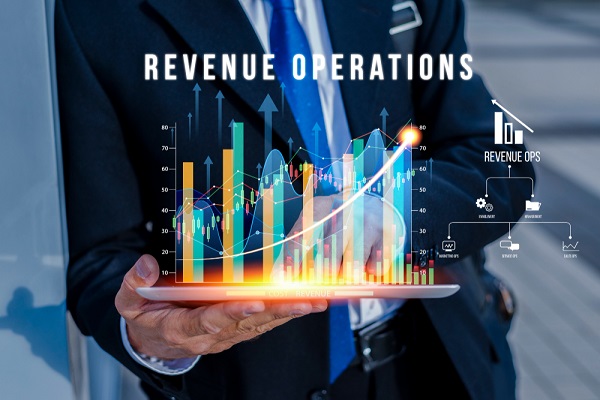

Technology and automation have become a highly integral part of business operations today. Besides, consumer behaviour has transformed drastically, where every market is a buyer's market and a buyer's journey continue long after the sale has been made. Undoubtedly, we come a long way from the traditional way of operating a business.
According to Gartner research, sales productivity experiences a 15% enhancement with RevOps implementation. This shows that modern RevOps gaining all the tractions for Sales enablement. And 75% of companies will deploy the RevOps model to transform their business strategies to increase sales by 2025.
In this guide, we will walk unfold the primary reasons that block the success pathway for businesses, which is creating a need for sales enablement to shift to RevOps. Keep scrolling!
Since sales enablement and RevOps share common goals, it can be confusing to distinguish them. Before we dive into the reasons why it is time to make the shift from sales enablement to RevOps, let's see how and where they differ.
The primary focus of sales enablement is to enhance the performance of the sales team, enabling them to close more deals. On the other hand, RevOps encompasses the entire revenue cycle, optimizing every stage, process, strategy, or revenue stream from which revenue can be generated.

Sales enablement primarily deals with sales training, sales enablement solutions, and sales processes. Revenue Operations involves every function that can affect revenue growth, from marketing and IT to customer service.
A sales enablement strategy typically uses sales metrics like lead generation and deal close rate. RevOps strategies use wider metrics like customer retention rates, acquisition costs, and satisfaction scores.
The primary goal of sales enablement is sales productivity – improving win rates, generating quality leads, and reducing deal close time. While RevOps shares this goal, its broader focus is to optimize the entire revenue cycle and maximize growth holistically.
Learn more about RevOps benefits
In this fast-growing world, it's vital for businesses to constantly update their growth strategies in line with evolving customer demands. Sales enablement alone may not be enough to reach your desired revenue goals, which is where RevOps comes in:
RevOps eliminates the isolated view of the revenue process that individual departments like sales or marketing often have. It establishes a single source of truth by integrating data across all relevant functions. Additionally, with a 360-degree view of the customer journey, from lead to renewal, RevOps empowers teams to identify bottlenecks, spot areas for improvement, and make informed strategic decisions based on real-world insights.
-Data transparency across all departments
-Unified data view
- Visibility into customer journey

When marketing hands off perfectly qualified leads, and customer success can anticipate renewal needs, the sales team focuses on their core function – closing deals efficiently. RevOps orchestrates this smooth flow across departments, eliminating redundancies, reducing friction, and enabling sales reps to spend more time selling and less time on administrative tasks.
Additionally, automating redundant tasks from lead scoring frees up sales teams to establish relationships and nurture potential customers more effectively.
RevOps is a strategy that aligns all teams involved in generating revenue around common goals and metrics. This promotes accountability and a shared sense of purpose across the entire organization.
According to Teamstage, collaboration and effective communication promote 4.5 times higher talent retention in the organization. Similarly, collaboration in RevOps breaks down knowledge silos, allowing insights from marketing, sales, and customer success to flow freely. This facilitates better decision-making and a consistent customer experience.
RevOps also enables teams to tackle issues collectively. For instance, marketing might identify a messaging gap, while sales might provide customer feedback. By working together, they can refine their pitch for increased conversions.
Personalization is gaining traction for all businesses and consumers in the ever-growing technological market. Ninety-one percent of consumers believe they are more interested in shopping with brands that offer personalized solutions (Ninetailed). This indicates that RevOps involves a strategic workflow and plan incorporating the buyer journey, persona, behavior data, and purchase history, which helps customize solutions according to their requirements. It will help them target the audience seamlessly.
Additionally, personalization in RevOps ensures that every touchpoint enhances overall user satisfaction, nurtures relationships, increases loyalty, and drives upsells and renewals.
Sales reps are unable to make an informed decision because data is kept in siloes. But RevOps advocates for a well-structured, centralized data repository, preventing data duplicity and ensuring accurate forecasting, and accessible information for all teams.
This means RevOps works as a data warehouse and stores all relevant information in a centralized place which helps generate more precise sales forecasts, resource allocation, inventory management, and strategic planning.
In a Nutshell,
There you have it! Understanding the reasons for transitioning from sales enablement to RevOps provides clarity on the exclusive benefits you can reap after the shift and addresses all the shortcomings faced earlier in the sales process.
In simpler terms, this shift can work wonders for your business. But, achieving your target goals may not be possible without the assistance of expert partner solutions, which is where TransFunnel steps in. TransFunnel is a MarTech solutions provider accredited with the HubSpot Elite badge, delivering top-notch solutions to end customers with 100% satisfaction.
With our expertise and seasoned professionals, you can address your business pain points through consultation, and we will assist you at every step of your RevOps journey.
Make Sales Enablement to RevOps Journey Seamless. Connect now!